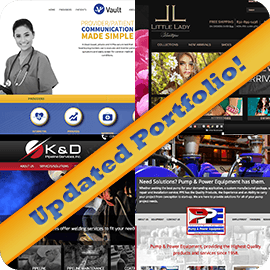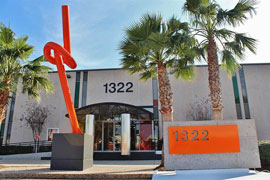Yes, you want a visually impressive email. But it’s not just about a pretty picture.
When it comes to the visual side of your email, email marketers tend to take the lead from their websites, because by doing so they not only enhance brand awareness, but also extend the trust their clients have in their brand to the inbox. So – if your email should look similar to your website you already have the outline for your email design. However, the trick is not in designing the visual…
The best email design is the one that’s centered around the subscriber. By anticipating how your subscriber is going to react to every element of your email, you can stay one step ahead of them to give them exactly what they’re looking for. And if they like what you’re sending them, they’re that much closer to engaging with your campaign and spreading the word.
So let’s climb into the mind of your subscribers to see how you can optimize your email design.
First impressions: Your From name
When you open your inbox to view unopened emails, the first thing you look at is who sent you these new emails. Generally, when sending marketing emails, we tend to stick to brand names for the “From” name – like Big Splash Web Design. The reason for this is that your subscribers have already demonstrated trust or interest in your brand by signing up for your emails. By sending emails from the brand name you increase the chances of recipients automatically opening your email purely based on recognition.
Hooking them in with the subject line
The next thing email recipients tend to look at is the subject line. While it’s good to look at certain subject line-writing tips, the best thing you can do for your subject line is to run a split test on it. Make sure you know what you’re testing, e.g. shorter subject lines vs. longer ones, repeating the brand name in the subject line against not doing so, only calling out the main article or listing all the different things you have in your newsletter, etc.
An impressive preview
Every subscriber will view your email differently according to which email client they use. Most email clients give them a sneak peek at your email before opening it through a preview pane. The portion of your email shown in every email pane will differ depending on the email client and the settings your subscriber chose. Generally, it will be roughly the top left 400 x 300px that will be displayed.
If you view your emails in a preview pane, you will notice that the images are usually blocked. Remember to insert descriptive ALT text for your images so that those readers who view the email with the images turned off will still have an idea of what’s going on.
An email in two parts – 1
When someone opens your email, they only see the top part of it. We refer to that part as the part above the fold; it’s anything you see on your screen before having to scroll down. With emails the trick is to get your subscriber to read the full email. Now that they’ve moved past the From name, subject line and preview pane and have actually opened your email, your email needs to deliver the content they’ve hoped for. If your email is relevant and well-written, designed well, concise and contains some value for them, you’ll have a better chance of getting them to give your email their undivided attention.
An email in two parts – 2
If the first part is above the fold, it only makes sense that the second part is below the fold. If you’ve convinced your subscribers to scroll down to the second half of your email you’re doing well. If needed, repeat your call-to-action (more on that below). Make sure that your email isn’t too long – your subscribers are busy and have a full inbox to attend to. Give them what they need and direct them to your site for further details.
Click-click. Your call to action
Why are you sending out an email newsletter? Think about whether you want to generate traffic to a specific page of your website, or whether there’s a desired action you want them to take (like making an online purchase or booking). This is your call-to-action (CTA) and to ensure subscribers react to it you have to design it so that it stands out – subscribers won’t respond to a CTA they didn’t see. Ideally, CTAs should also be straight-forward and to the point. Use your words wisely.
Email marketing campaigns that incorporate strategic design are a lot more likely to relate to subscribers. When designing your campaigns, think like your recipients – you’re guaranteed to have a better response rate.

